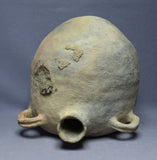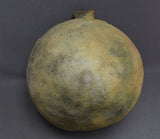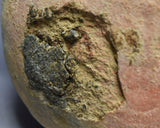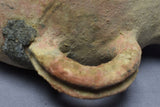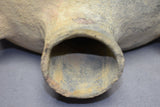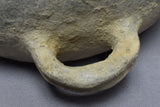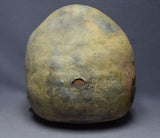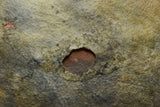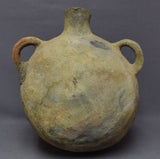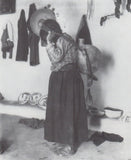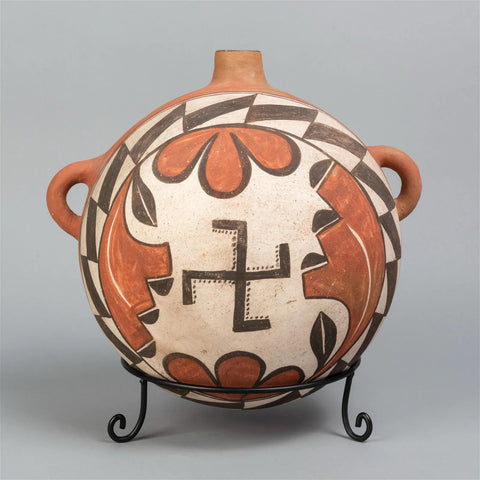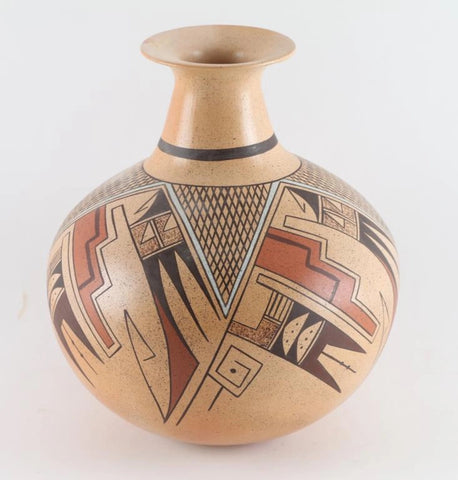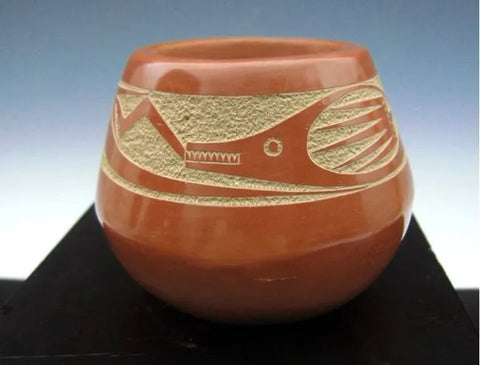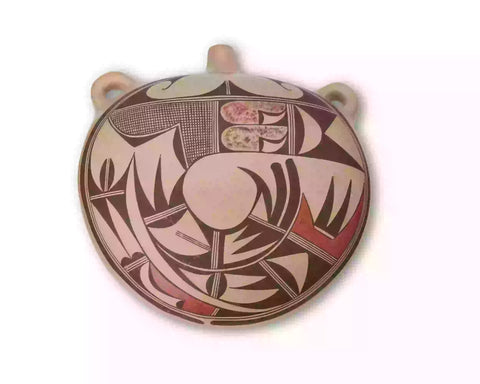
Native American, Rare Historic Very Large Hopi Pottery Water & Snake Canteen, 1890's, #1654
$ 4,200.00
Native American, Rare Very Large Historic Hopi Pottery Water & Snake Canteen, 1890's, #1654
Description: #1654 Native American, Rare Very Large Historic Hopi Pottery Water & Snake Canteen, 1890's. Hand coiled pottery snake canteen, has old pine pitch repairs.
Dimension: 15'' x 13'' x 13''
Condition: Very good for its age and use over the past 100+ years.
Here is some information from Adobe Gallery on pieces like this and how they might have been carried with water. "Image Below: “Nampeyo carrying an olla” Adam Clark Vroman, 1901. (The Southwest Museum, Los Angeles. Photo #N22764.) Nampeyo posed for Vroman inside her home with a typical canteen carried by women to carry water from the spring below the mesa. Photo part of public domain."
"As mentioned above, Adam Clark Vroman photographed Nampeyo in 1901 with a large water canteen on her back with a strap over her forehead. Some days, she made four trips down the mesa to the spring for water. This canteen at the gallery is like the one photographed with Nampeyo. Its empty weight is 12 pounds. Filled with water, it weighs 29 pounds."
"The process of constructing large water hauling canteens like this is described in great detail by Alexander Stephen in his Journal. Using a flat stone or level sand as a support, the flat back is first formed by using coils of clay to form a flat spiral that is then smoothed out. Then coils of clay are added around the edge until the sides are built up a bit higher than where the neck and handles will be affixed. A cylinder of clay is then used to form the spout. A ring of clay encircles the cylinder spout on the inside and is smoothed out to form a sort of gasket; two inches or more of the clay cylinder inside the jar are then pressed down over the sealed junction with the body to make the clay homogeneous. Two holes are then punched in the clay where a handle is to be affixed. Coils of clay are inserted from the outside to form the handles and, as with the spout, a gasket of clay is placed at the juncture of the handle and the inside walls and pressed to seal the juncture. The extra clay from the handle is then smoothed down over the gasket, leaving the portion of the canteen surrounding the handles on the inside a bit thicker than elsewhere. The remaining walls of the canteen are then built up to form the completed “belly” of the jar (Stephen 1936 and 1969:1188-1189)"(Source First People Pots).
"During the semi-annual Snake Dance, such water canteens were used to contain the snakes before they were danced (See Steven, 1936 and 1969:730-731)"(Source First People Pots).

